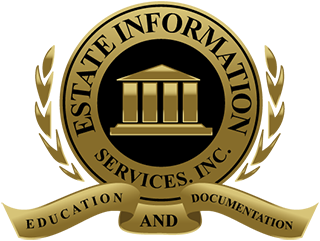Why You Need a Trustee
A living trust is not complete without a few key details – assets that fund the trust, the grantor who initiated the trust, the beneficiary who will receive the assets held in the trust, and the trustee who oversees the trust by following the instructions written within it. While the trust would not exist without the grantor and the assets and its intention is to benefit the beneficiary, a trust truly runs on the power of the trustee. They are the individual who oversees the trust and enacts the will and desire of the grantor of the trust. Whether the trustee and the grantor are the same person is entirely up to you, but just as many people name themselves as the trustee as they do another person. The trustee can be a trusted friend, a spouse, adult child, a professional (or corporate) trustee, or even a firm. In the end, it is entirely up to the grantor who will oversee the trust as the trustee, but there are certain responsibilities of the trustee, whoever that may be.
The Responsibilities of a Trustee
As the trustee, it is imperative that they follow the instructions that are laid out in the trust, as the role of trustee is a person who is trusted. By not following the instructions, the trustee risks being removed from the position of trust and replaced by the grantor. While the grantor has the power to change trustees at will, the whole point of the concept is trust – many grantors will not remove a trusted friend or spouse from the position if they are following the instructions of the trust.
Other responsibilities revolve around what can and cannot be done with the trust – as it is not your estate, you are only overseeing its care for the grantor. You are not allowed to mix trust assets with your own, these include checking accounts, savings accounts, and investments. You are disallowed from using the assets of the trust for your own personal benefit – unless the trust authorizes it and then only to the extent that the trust allows. The trustee has to treat each beneficiary in the same manner, without favoritism – unless the trust favors one beneficiary over the other, and then only to the extent that the trust allows. While a trust might involve stocks and other investments, it is expected of the trustee to invest in as conservative a manner as possible that can bring about reasonable growth with as little risk as possible. Finally, any and all records pertaining to the trust and its activity are to be kept accurately – these can include the filing of tax returns and reporting to the beneficiaries as the trust requires.
Professional Assistance with the Trust
As you are handling the trust with care, it is not expected of you to do this alone, especially if there are areas that you are not an expert in. Seeking professional assistance as the trustee can allow you to make the most prudent decisions regarding the trust in order to maximize it. This assistance can extend to the grantor regarding their health. The trust would include information regarding what ‘incapacitated’ means for them, beyond what the legal medical definition is and how the trust should be handled in this instance. While the first step is to ensure that the grantor is receiving adequate care, the next may be to prepare the beneficiaries for the estate to be handed down to them. This is why it is important to understand the trust and its expectations; certain provisions may come into effect one day but not another – such as how a minor child is to be cared for. If the child is no longer a minor, but the trust has not been accurately updated to reflect this, the details for their care may not apply.
Professional assistance not only minimizes the risks associated with drafting a trust, they help to ensure that there are no conflicts between your trust and any information that is held within it. This can include the title on a car or a house that you intend on leaving to an heir, which is often in the name of the person who purchased it. If the title lists you and not the trust, then it is not actually included. These minor technicalities can cause widespread issues over time that can magnify and possibly lead to your entire trust being under contention, declared invalid, and your assets directed through probate.
Updating the Trust
Throughout the life of a living trust it needs to be updated regularly – something the grantor must do. The trustee can and should approach the grantor to update the trust as details change that they notice but the grantor might not. These updates can relate to age-specific provisions, such as how a child is to be cared for or to details related to a beneficiary who is no longer alive or has been disinherited. The trust is a living document, legally, and it is a reflection of the grantor’s life at the time of its creation. Time brings change and change can cause a trust to become out of date and possibly lead to contention with the courts.
The Trustee and the Grantor’s Death
The trustee is akin to the executor of a will – they are the one who informs the beneficiaries of what they will be receiving from the estate and make all of the necessary preparations for this time. Before they can do that, though, they will review the trust with an attorney in order to determine that all of the assets of the grantor’s estate were included, which cuts out the probate court from the process. The trustee will need to compile an approximate value list of the assets, though an accurate value list will be compiled, too, in order to move forward with the estate tax return that is due before nine months after the passing of the grantor. Many of the responsibilities of the trustee at this time are related to notification – of the family, beneficiaries, the banks, brokerages and stock firms (if applicable) with a certified death certificate and the documents showing that you are the trustee. This will give you control over their death benefits, assets, and the process as a whole.
In the end, the trustee has numerous responsibilities, but they do not have to approach them on their own – nor are they expected to.



